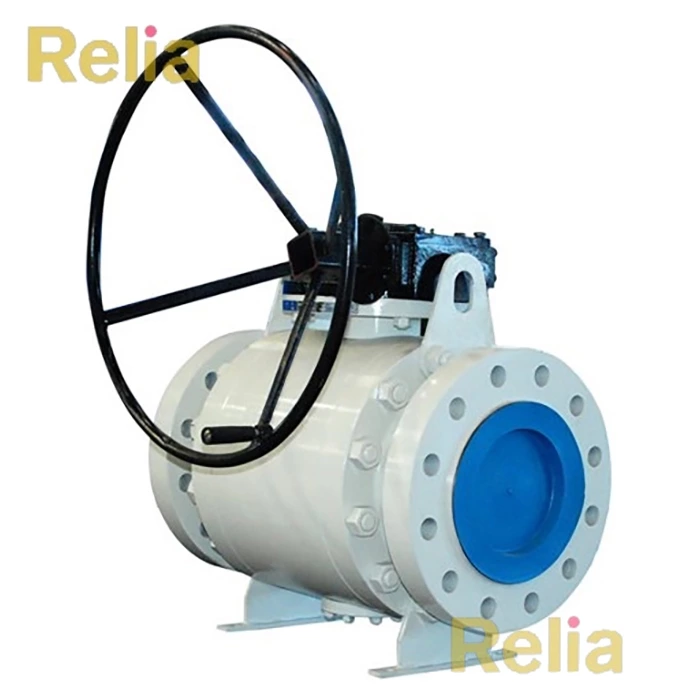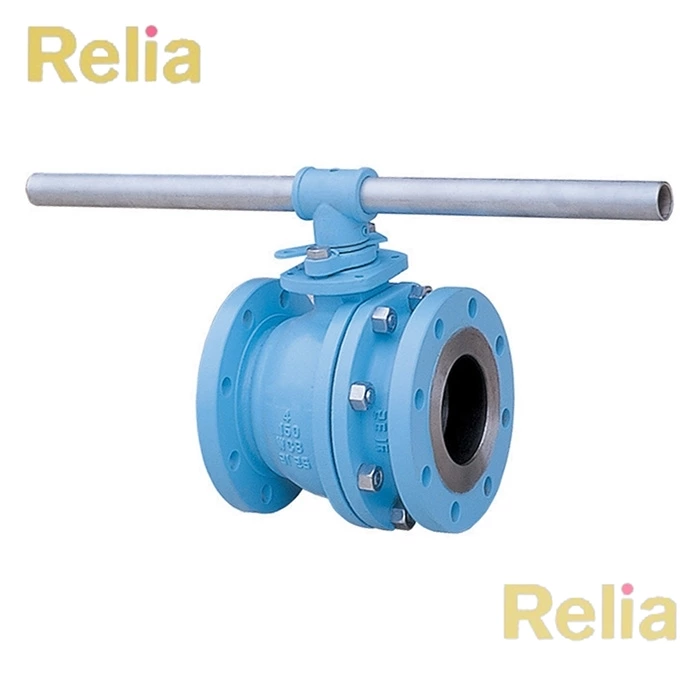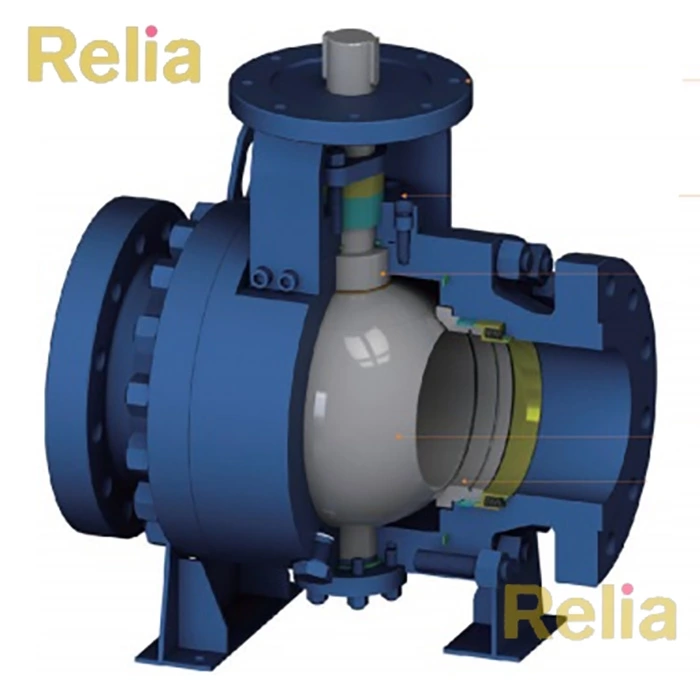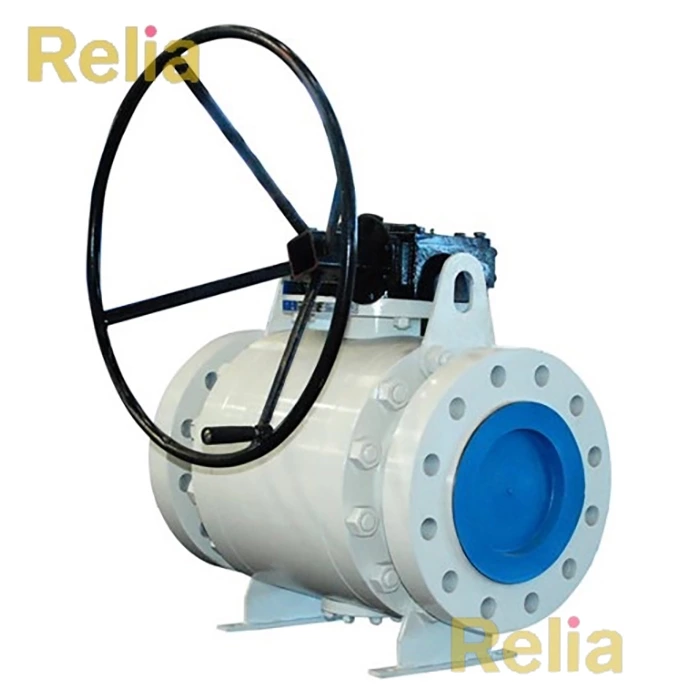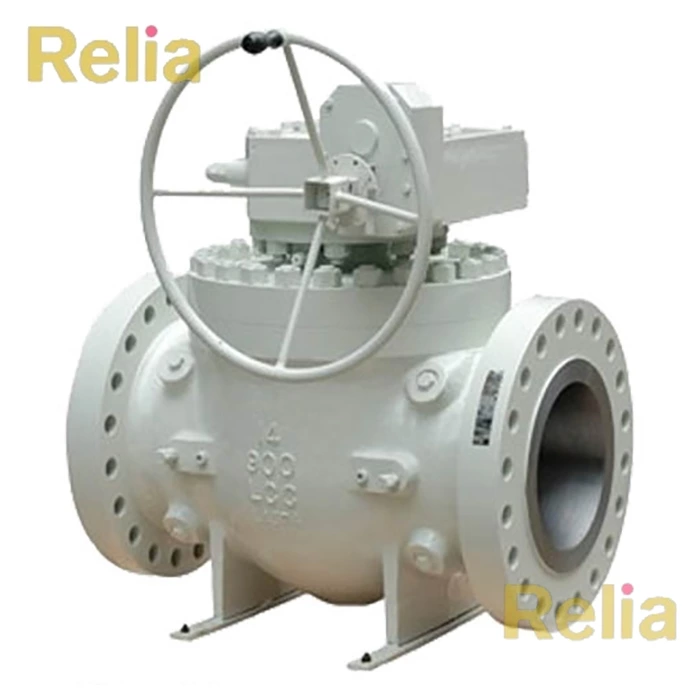Trunnion Mounted Ball Valve VS Floating Ball Valve
The floating ball valves and trunnion ball valves are both quarter-turn valves, providing a bubble-tight seal for bi-directional sealing for both low and high pressure. However, they have advantages and disadvantages when compared to floating and trunnion-mounted ball valves.
Floating and Trunnion Ball Valve Comparation
| Floating Ball Valve | Trunnion Ball Valve | |
| Construction | Without "trunnion", the ball will move towards the seat when the flow pressure pushes it, while the seat will not move. | The “trunnion” makes the ball not move, while the seat will move towards the ball when flow pressure pushes it. |
| Working Principal | The flow pressure pushes the ball to the seat to seal. | The flow pressure pushes the seat to the ball to seal. |
| Function | On/off, self relieving seat | On/off, double block and bleed, DIB, self relieving seat |
| Open Speed | Quarter turn, fast operation | Quarter turn, fast operation |
| Suitable Fluid | Oil, gas, petrochemical, wast water etc, hydraulic power | Oil, gas, petrochemical, wast water etc, hydraulic power |
| Suitable Pressure & Size | Class 150-300, 1/2”-6”; Class 600, 1/2”-3”; Class 900, 1/2”-2”; Class 1500, 1/2”-1” |
Class 150-300, 3” and larger; Class 600-90, 2” and larger; Class 1500-2500, 1-1/2” and larger |
| Flow Direction | Bi-direction, single direction | Bi-direction, single direction |
| Torque | Higher | Lower |
| Seat Material | Soft, metal Seat | Soft, metal Seat |
| Suitable Temperature | -196~625℃ | -196~625℃ |
| Design Standard | API 6D, API 608, BS 5351 | API 6D, API 608 |
| Price | Lower | Higher |
Floating Ball Valve
A floating ball valve gets its name from the ball. It is a sphere that "floats" freely inside the valve’s body, which is compressed between two flexible seats while suspended in liquid. What a floating ball valve normally does during operation is float slightly downstream, which causes the seating mechanism to compress under the ball. Should the seat disintegrate, the ball floats to the metal stem to seal it. This provides a failsafe within the design.
As the most common valve type in the piping industry, floating ball valves play an important role in regulating flow through pipelines and other piping systems in the gas, oil, water and other industries. They create a bi-directional seal and can even be customized for high pressure operations, though normally they are only used in pipelines with low to medium pressure. Available in different configurations and sizes, they feature a ball-shaped disk that’s hollow and perforated so that liquids can pass through it when open.
As the nominal bore size of the ball increases, the weight of the ball also increases, and the area subjected to the line pressure also increases. This has the overall effect of increasing the load (force) acting on the ball. There comes a point where it is no longer possible for the seats to support the ball and it is necessary to look at a different design. This is where the trunnion-mounted ball design comes into play.
Advantages:
1. Cost-effectiveness
2. Fewer valve parts make maintenance easier.
3. Reduced manufacturing time
Disadvantages:
1. Complete reliance on the downstream seat when carrying a medium load
2. Bigger torque at the same size and operating conditions
3. Seating directly absorbs the ball’s gravity, so it is unable to reliably withstand higher pressures or larger balls.
Trunnion Mounted Ball Valve
As described above, there comes a point where, owing to the high value of the loading forces on the ball, it becomes no longer possible for the seats to support the ball and an alternative design is required.
A trunnion mounted ball valve means that the ball is constrained by bearings and is only allowed to rotate. The majority of the hydraulic load is supported by the system constraints, resulting in low bearing pressure and no shaft fatigue.
In effect, the trunnion mounted ball design in effect addresses this problem, where in effect the shaft, ball, and trunnion act as a single assembly that supports the ball instead of the seats, and the seats become "floating" in a kind of reversal of the "floating ball" design. Similarly, a trunnion-mounted ball design is also capable of bi-directional sealing.
Advantages:
1. Low torque
This is particularly advantageous when the ball valve is actuated because it reduces the size of the actuator and, hence, the overall cost of the valve actuation package. Obviously, this distinction becomes significant as the pressure class and valve size increase.
2. It can withstand higher pressures or larger balls on a consistent basis.
Disadvantages:
1. Expensive
2. It is not suitable for very small sizes, typically 1-1/2" and below.
